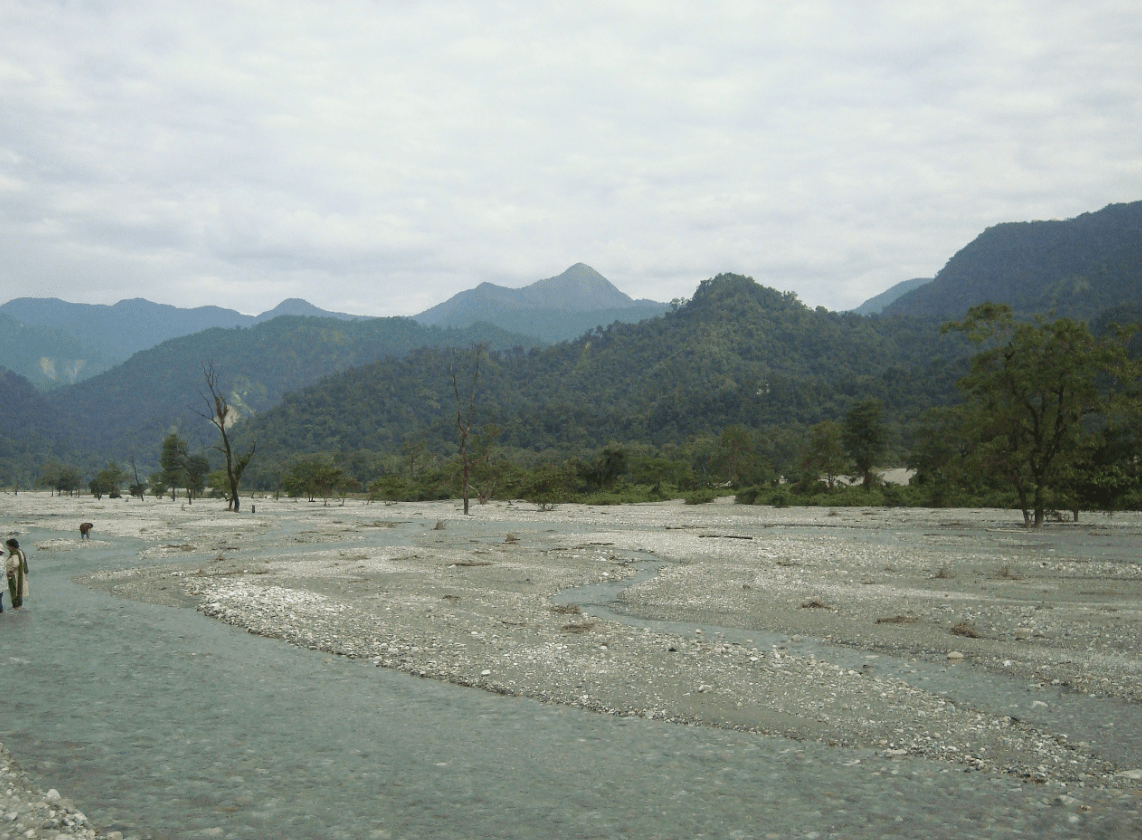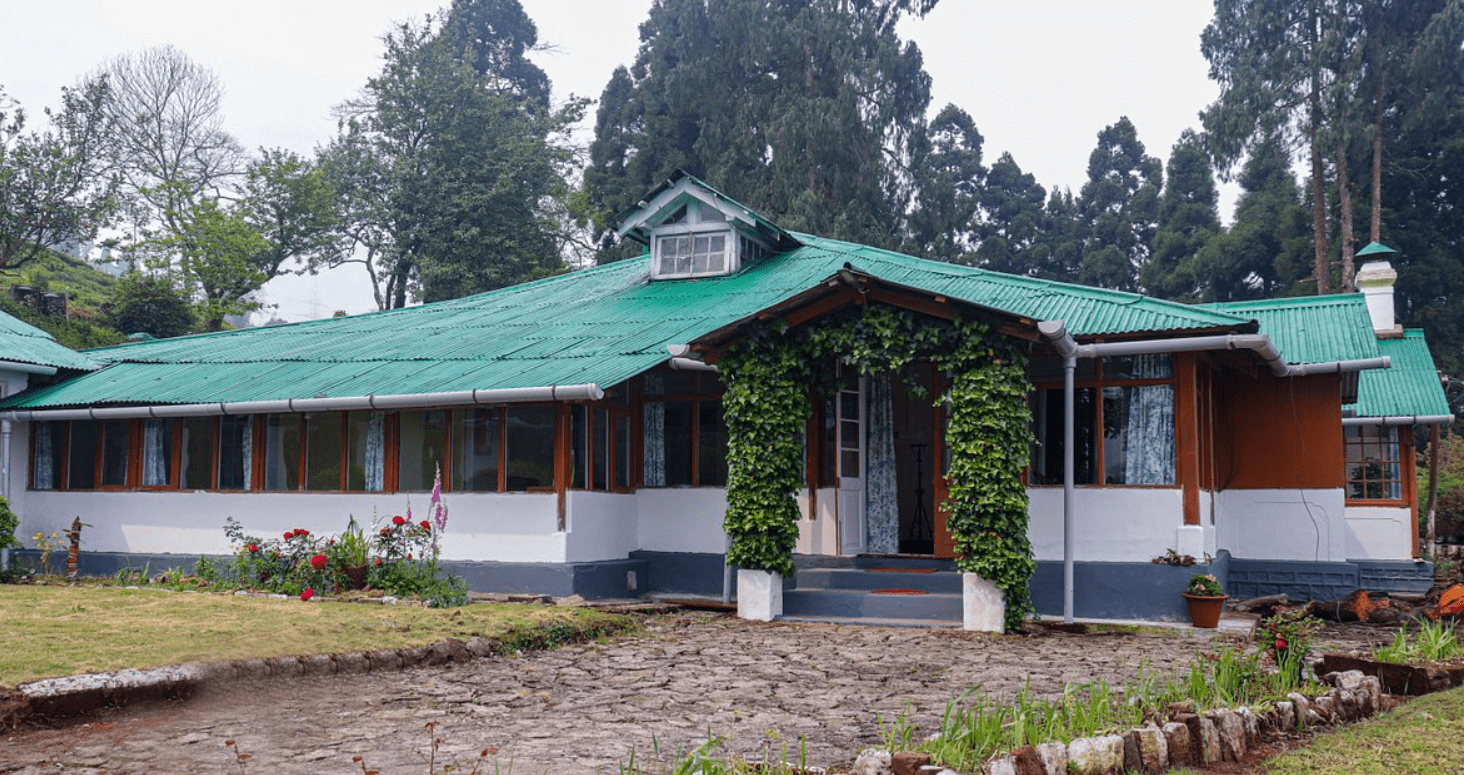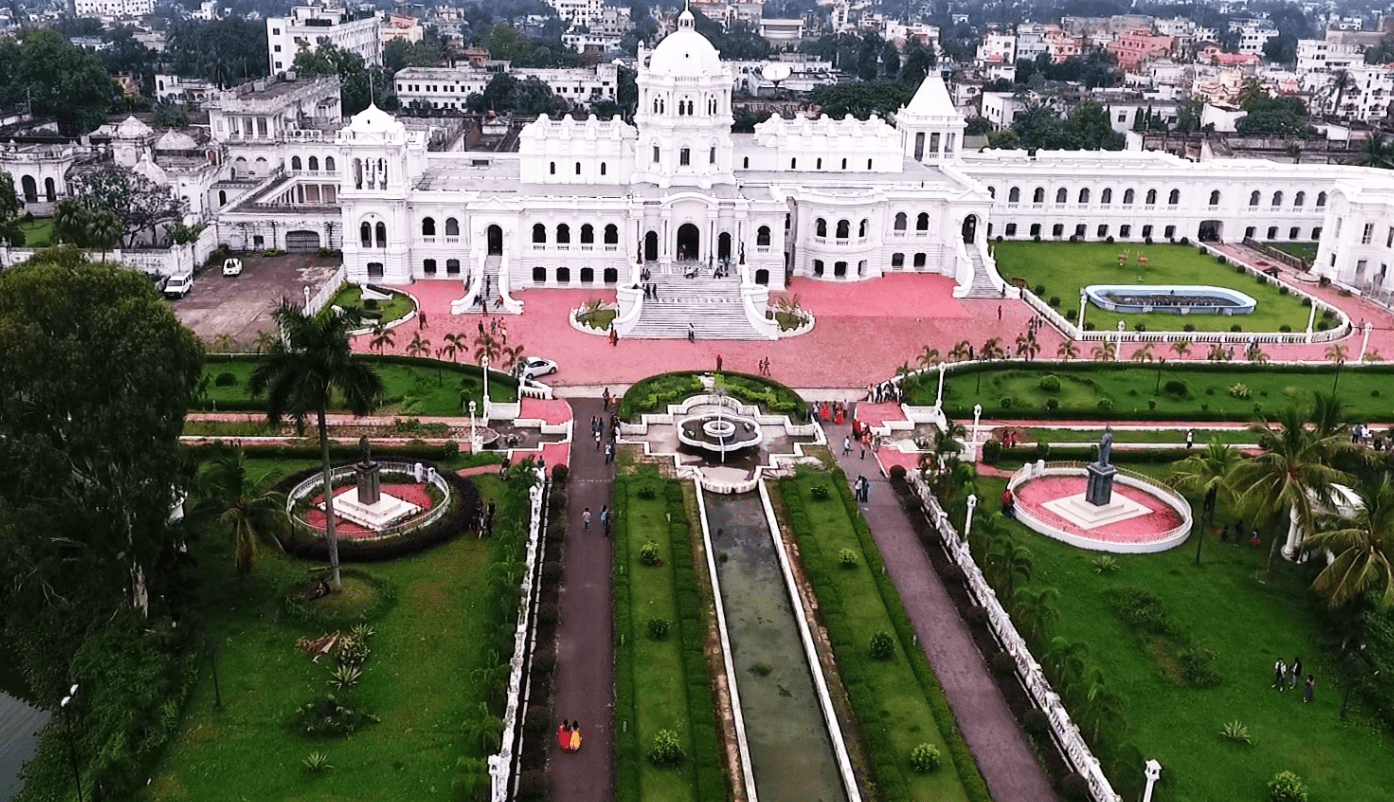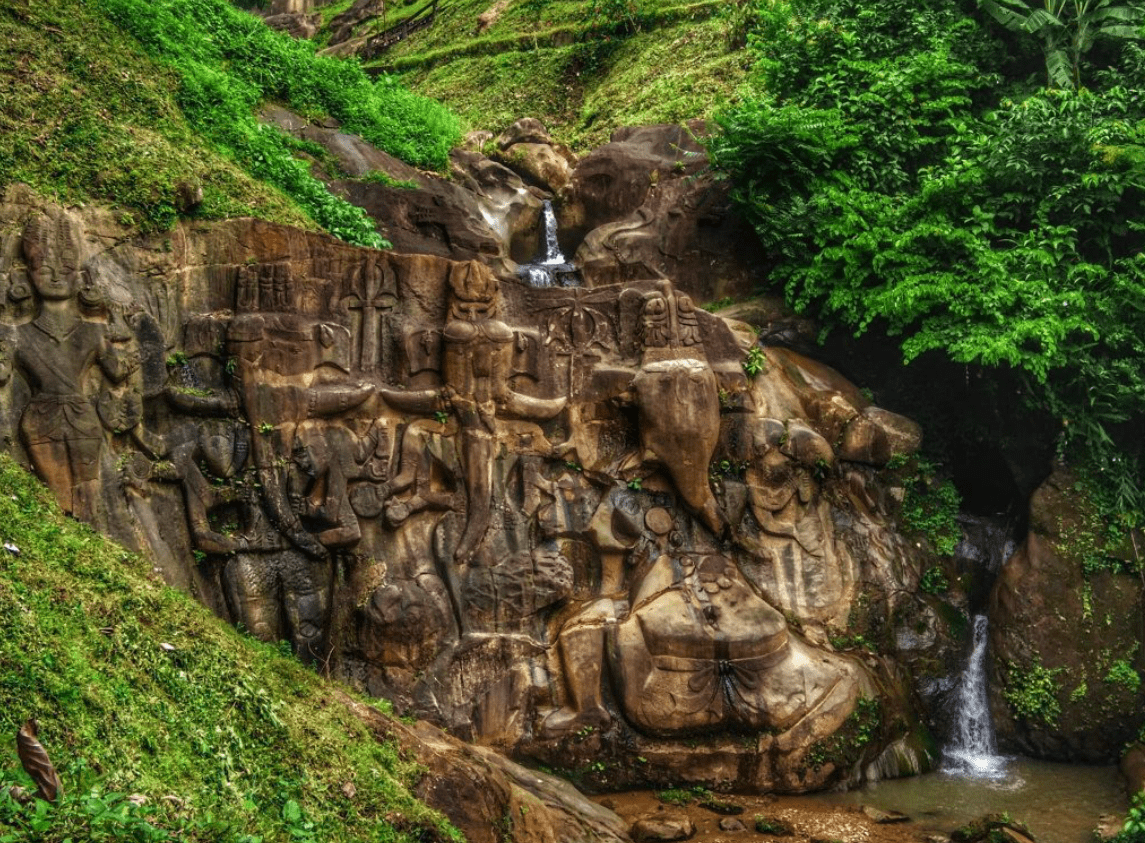Buxa, Jayanti, and Lepchakha hold a cherished place in our hearts. This journey to Buxa Tiger Reserve and Jayanti marked our inaugural visit to the Dooars and North Bengal, preceding even our exploration of Darjeeling. The trek to Buxa Fort was also our first encounter with the exhilarating world of hiking and trekking.
Buxa stands out as one of the most renowned destinations in the Dooars region. It is part of the Buxa Tiger Reserve located in the Jalpaiguri district of Bengal. The entire area falls within the Buxa Tiger Reserve, one of the largest forested expanses in the Dooars. The region is also known for its short uphill trek to the historic Buxa Fort. Lepchakha, a quaint hamlet perched on a hilltop, can be reached via the same trail leading to Buxa Fort.
Buxa Tiger Reserve
Situated in the northeastern part of West Bengal, bordering Bhutan, Buxa Tiger Reserve encompasses the largest forested area in the Dooars, covering 759 sq km. Its northern boundary extends into Bhutan’s Phipsu Wildlife Sanctuary, similar to Assam’s Manas National Park. This reserve plays a crucial role as an elephant corridor connecting the forests of Bengal and Bhutan. Nestled at the foothills of the Lower Himalayas, Buxa Tiger Reserve boasts a diverse landscape.
Declared a Tiger Reserve in 1983, Buxa Tiger Reserve once had the second-largest tiger population in West Bengal, after Sunderbans. However, the tiger population has since declined, and local residents claim that sightings are now extremely rare. We have yet to encounter any confirmed tiger sightings by tourists in Buxa.
The entry point to Buxa Tiger Reserve is Rajabhatkhawa, a name that initially seemed amusing. Translated into Bengali, it means ‘the king ate rice’. According to local lore, the King of Coochbehar used to visit the forests for royal picnics, and thus, Rajabhatkhawa got its name.
A ticket counter at Rajabhatkhawa issues entry tickets to the reserve. After entering, a 10 km drive leads to Buxa More, where a straight road heads to Santalabari, the foothill. From there, an uphill trek route leads to Buxa Fort. Continuing further on the trekking trail will take you to Lepchakha and Sinchula Pass in Bhutan.
A right turn from Buxa More leads to Jayanti, a charming settlement beside the Jayanti River. Jayanti is also part of Buxa Tiger Reserve and is approximately 5 km from Buxa More.
Animals at Buxa Tiger Reserve
Tigers are exceedingly rare in Buxa Tiger Reserve, making sightings a rare event. However, the reserve is home to other wildlife, including leopards, elephants, bison, spotted deer, barking deer, sambar, hog deer, jackals, hyenas, and various wild cats. Our guide reported frequent leopard sightings but had yet to spot a tiger. The road from Rajabhatkhawa to Buxa More is a known elephant corridor, and various snake species, including venomous ones, inhabit the reserve.
The reserve and its surrounding areas host a rich birdlife, including migratory species such as Common Teal, Gargani Teal, Large Whistling Teal, and White-Eyed Poachared. Many birds are visible along the banks of the Jayanti and Raidak Rivers.
Jungle Safari at Buxa Tiger Reserve
A jungle safari is a must when visiting a forested area like Buxa Tiger Reserve! Safaris start from Jayanti, where permits and guides can be arranged at the Jayanti Range Office. You can use your own car or book a Gypsy for the safari. Local guides, well-versed in the area, are available for hire.
Jeep Safari at Buxa
Several jeep trails, totaling approximately 17 km, are accessible. The entry gate for jeep safaris is near Jayanti’s main market. The ride takes you through dusty trails surrounded by thick foliage, offering a chance to spot deer, bison, and elephants.
Even without animal sightings, jungle safaris are an immersive experience. The serene atmosphere, lush landscapes, and occasional wildlife sightings make the journey worthwhile. At Buxa Tiger Reserve, the constant chirping of crickets was our primary accompaniment, with sightings of deer, bison, and birds. We later visited the Bala River before heading back.
Safari Timings:
6:00 am to 11:00 am and 2:00 pm to 5:00 pm
Only a limited number of vehicles are permitted inside the reserve at a time. On-the-spot bookings during peak tourist seasons can be challenging, so an overnight stay at Jayanti is recommended.
Cost of Jeep Safari: Booking an entire jeep with a guide costs approximately Rs. 1200.00 (as of October 2019), including permits and guide fees.
Chunia Watchtower Safari
The Chunia Watchtower and Bhutia Basti Watchtower are located across the Jayanti River in the reserve’s buffer zone. You can book a jeep safari from the Jayanti Range Office to reach Chunia Forests. From the watchtower, you might spot wildlife such as elephants, bison, and various deer. This safari involves crossing the Jayanti River, adding an exciting element to the experience.
Trek to Pokhri Hill
Pokhri Hill, about 4 km from Jayanti, is accessible by car up to the hill’s base. The name ‘Pokhri’ means pond, referring to a lake on the hill. A 1.5 km trek through dense forests leads to this sacred Buddhist and local site. The lake, home to fish and turtles, is considered sacred. A guide is essential for this trek, costing around Rs 250.00.
Jayanti
The highlight of our Buxa-Jayanti trip was undoubtedly Jayanti. This charming village within Buxa Tiger Reserve, situated beside the Jayanti River, is aptly named the “Queen of Dooars.” We were captivated by its beauty, with the riverside, quaint houses, and the stunning Jayanti River being the main attractions.
The Jayanti River, often dry outside the monsoon season, features a bed of loose stones and boulders with a narrow stream. The view of Bhutanese hills and forests adds to its allure. A broken bridge in the riverbed hints at a past iron bridge, adding a touch of romance.
Evenings by the river are enchanting, and we cherished our time there, strolling on the riverbed and exploring the area. The sunrise at Jayanti was equally breathtaking, competing with our past experiences at Sandakphu-Phalut and Tiger Hill.
Jayanti is about 5 km from Buxa More, requiring a river crossing. Although the riverbed is typically dry, it can swell during the monsoon, making travel challenging.
Jayanti features a small market, and the village’s eco-tourism development is benefiting locals, with homestays and guide training contributing to the local economy.
Mahakal Trek
The Mahakal Cave, dedicated to Lord Shiva, is located 13 km from Jayanti. The trek through Buxa Tiger Reserve’s dense forests is best undertaken in winter, as the route becomes inaccessible during the monsoon.
Our Experience at Buxa Jayanti
Our visit to Buxa and Jayanti, part of our Dooars tour, followed trips to Rongo, Jaldhaka, and Lataguri. Jayanti was a standout experience, and here’s a tentative itinerary to help plan your trip:
Buxa Tiger Reserve and Jayanti Tentative Itinerary
Day 1: Lataguri – Jayanti
We traveled from Lataguri to Rajabhatkhawa by car, arriving around 10:00 am. After obtaining our entry tickets, we drove to Buxa More and then headed to Jayanti. We booked a safari for the following day, spent the day by the Jayanti River, and trekked to Pokhri Hill in the afternoon.
Day 2: Jayanti
An early morning safari was followed by a visit to Chunia Watchtower across the Jayanti River. The rest of the day was spent exploring the village and relaxing by the river.
Day 3: Jayanti – Buxa Fort – Lepchakha – Buxa Sadar Village
We started early for Santalabari, parked our car, and began our trek to Buxa Fort. After exploring the fort, we checked into a homestay, trekked to Lepchakha, enjoyed the sunset, and returned to the fort for the night.
Day 4: Buxa Village – Rakabhatkhawa – New Alipurduar
We departed late in the morning, drove down to Santalabari, and then to New Alipurduar Railway Station for our train back to Kolkata.
How to Reach Buxa Tiger Reserve and Jayanti
The nearest railway station is New Alipurduar, 15 km from Rajabhatkhawa, accessible by taxi or auto. Jayanti is another 15 km away. Buses run between Jayanti and Rajabhatkhawa, but their schedules can be irregular. For air travel, Bagdogra is 180 km from Rajabhatkhawa, and New Jalpaiguri is 176 km away. Cars can be hired from these locations.
Rajabhatkhawa also has a small railway station with passenger trains from Siliguri to Alipurduar, though no express trains stop there.
Where to Stay at Jayanti
Jayanti offers several homestays and lodges. The West Bengal Forest Development Corporation (WBFDC) operates a lodge at Rajabhatkhawa, which can be booked online. Private
lodges and homestays are also available.
Buxa-Jayanti Tips:
- Visit Jayanti during the winter months (November to February) for better weather and clear skies.
- Carry necessary permits for safaris and treks.
- Respect local wildlife and follow park rules.
- Bring comfortable walking shoes and clothing suitable for trekking.
Final Thoughts:
Buxa and Jayanti offer a serene and scenic escape into nature, blending history, wildlife, and picturesque landscapes. The experience is truly memorable, especially if you love exploring off-the-beaten-path destinations.



